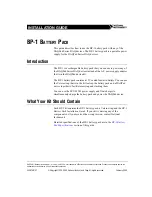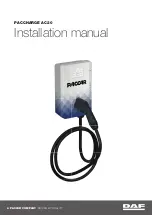
4
12. PREPARING TO CHARGE
a) If necessary to remove battery from vehicle to charge, always remove
grounded terminal from battery first. Make sure all accessories in the vehicle
are off, so as not to cause an arc.
b) Be sure area around battery is well ventilated while battery is being charged.
Gas can be forcefully blown away by using a piece of cardboard or other
nonmetallic material as a fan.
c) Clean battery terminals. Be careful to keep corrosion from coming in contact
with eyes.
d) Add distilled water in each cell until battery acid reaches level specified by
battery manufacturer. This helps purge excessive gas from cell. Do not
overfill. For a battery without cell caps, carefully follow manufacturer’s re-
charging instructions.
e) Study all battery manufacturer’s specific precautions such as removing or not
removing cell caps while charging and recommended rates of charge.
f)
Determine voltage of battery by referring to vehicle owner’s manual and
make sure that it matches the output rating of the charger.
13. CHARGER LOCATION
a) Locate charger as far away from battery as dc cables permit.
b) Never place charger directly above battery being charged; gases from
battery will corrode and damage charger.
c) Never allow battery acid to drip on charger when reading gravity or filling
battery.
d) Do not operate charger in a closed-in area or restrict ventilation in any way.
e) Do not set a battery on top of charger.
14. DC CONNECTION PRECAUTIONS
a) Connect and disconnect dc output wires only after interrupting power and
removing ac cord from electric outlet. Never allow wires to touch each other.
b) Attach wires to battery and chassis as indicated in 15(e), 15(f), 16(b), and
16(d).
15. FOLLOW THESE STEPS WHEN BATTERY IS INSTALLED IN VEHICLE. A





























